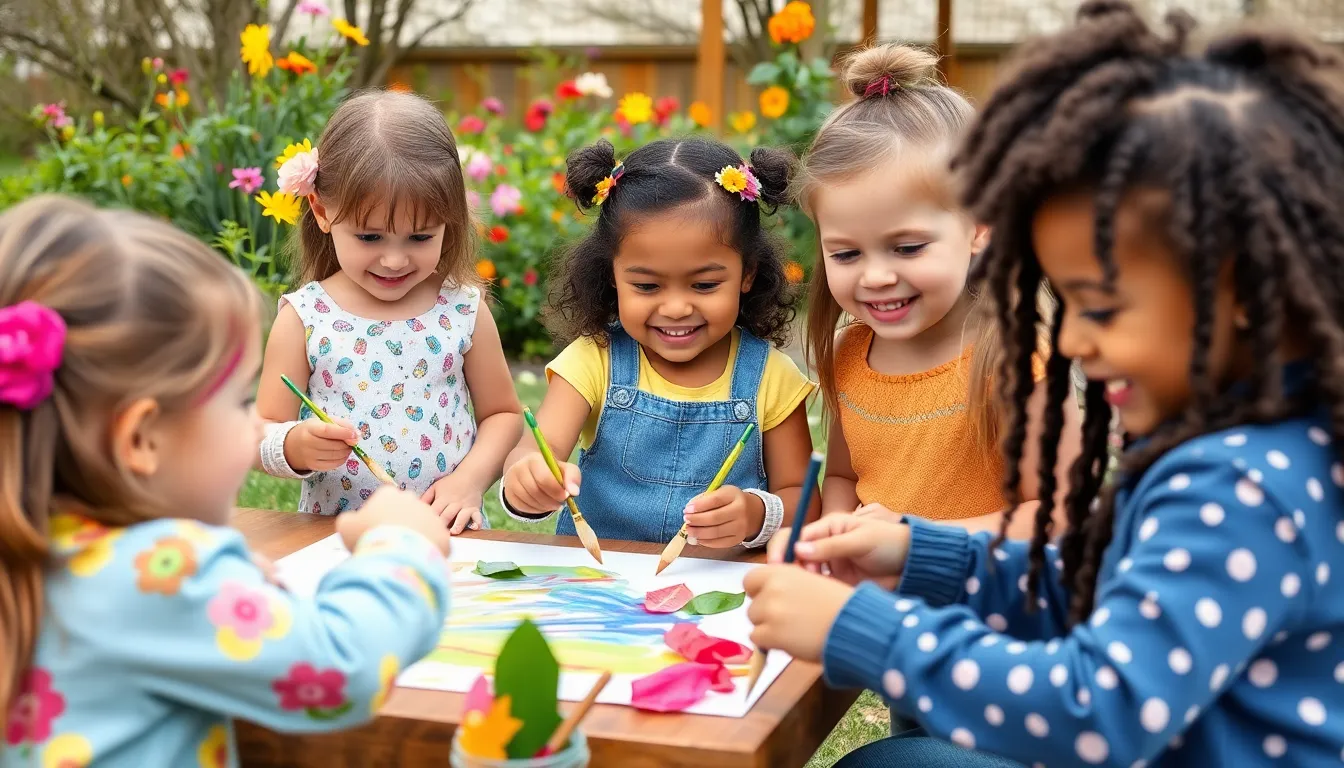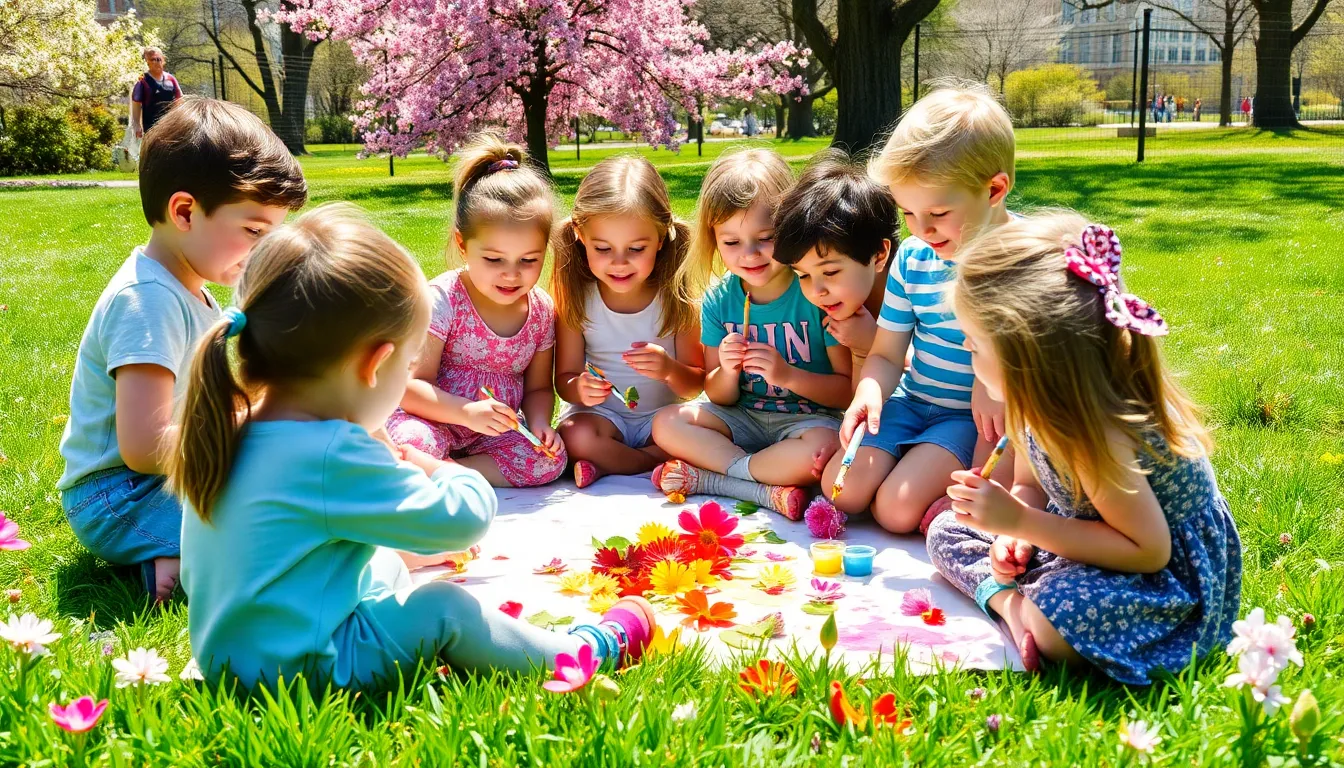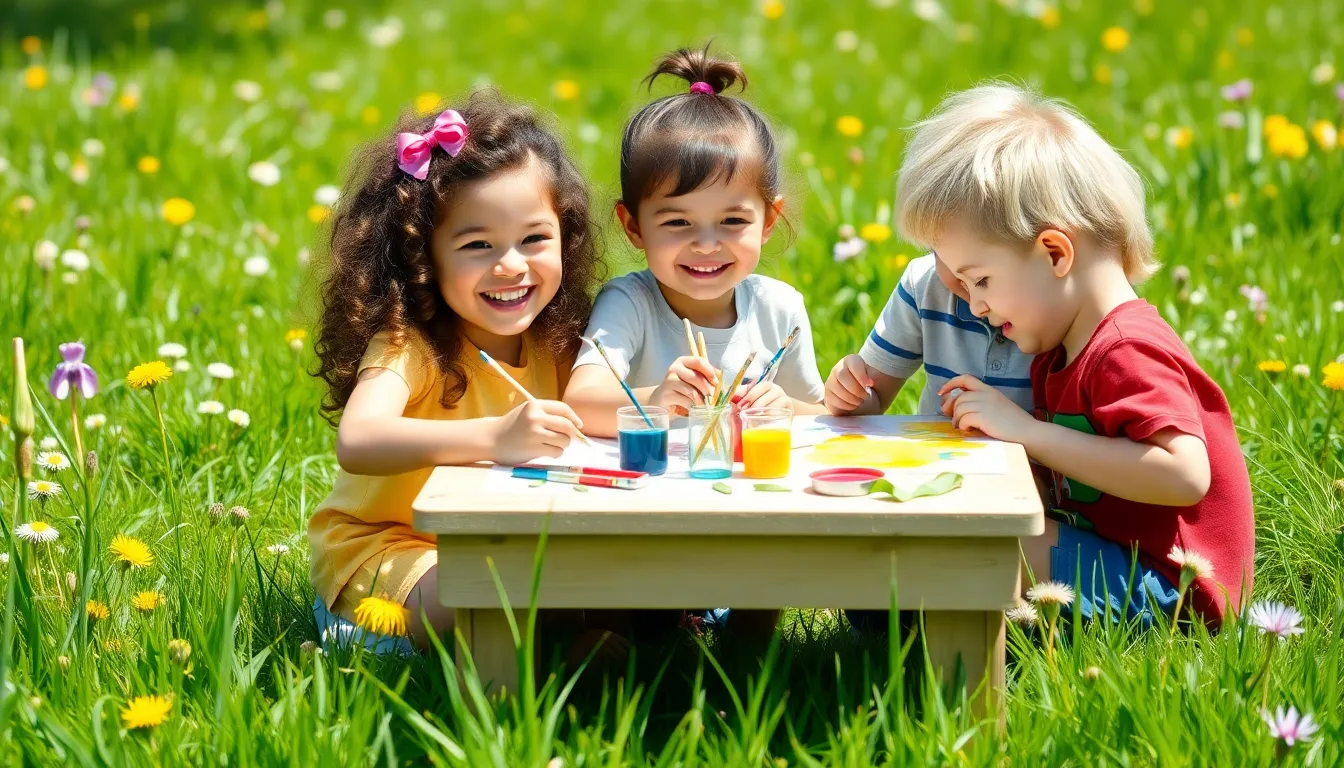As the flowers bloom and the sun shines brighter, spring presents the perfect canvas for preschoolers to unleash their creativity. Who knew that a simple dandelion could inspire a masterpiece? Spring art projects not only nurture young imaginations but also keep those little hands busy—perfect for parents who need a moment of peace.
Table of Contents
ToggleSpring Art for Preschoolers: An Overview
Spring serves as an excellent opportunity for preschoolers to engage in various art projects inspired by nature. Bright colors, blooming flowers, and playful animals ignite creativity. Simple activities, such as painting with dandelion stems or creating collages from fallen leaves, spark imagination.
Art projects for preschoolers offer educational benefits. Learning opportunities concerning colors, shapes, and textures emerge naturally when children work with different materials. Through tactile experiences, children enhance their fine motor skills while creating art pieces.
Seasonal themes can guide project selection. Garden scenes, rainbows, and butterflies represent springtime well. These themes not only inspire creativity but also provide context for discussions about the changing seasons and nature.
Collaborative projects foster social skills. Group activities, such as mural painting or flower pot decorating, encourage sharing and teamwork. Children learn to express ideas and appreciate diverse perspectives during group projects.
Incorporating storytelling enhances art experiences. Reading stories about springtime can serve as inspiration for art projects. By linking narratives to visual creations, children develop critical thinking and comprehension skills.
Parents and educators can encourage exploration by providing open-ended materials. Items such as colored paper, markers, and natural objects create limitless possibilities. Allowing preschoolers to choose their materials empowers them, promoting self-expression and confidence in their artistic abilities.
Benefits of Spring Art Activities


Spring art activities offer preschoolers valuable opportunities to grow creatively and developmentally. Engaging with nature through art inspires children to explore and express themselves.
Enhancing Creativity
Art activities in spring foster creativity, allowing preschoolers to experiment with colors and materials. Bright blossoms and vibrant greenery serve as inspiration for imaginative projects. Each art experience encourages unique expressions, helping children think outside the box. Crafting with natural elements empowers kids to invent their designs and concepts. Playful themes, like rainbows or garden insects, ignite storytelling potential, merging visual arts with verbal skills. By creating alongside peers, children share ideas and refine their artistic voices. Ultimately, hands-on art exploration cultivates an environment where creativity can flourish.
Developing Fine Motor Skills
Participating in spring art activities enhances fine motor skill development for preschoolers. Manipulating various art supplies, such as paintbrushes and scissors, strengthens hand-eye coordination. Each task—from cutting petals for collages to painting with dandelion stems—challenges children’s dexterity. Tactile experiences contribute to sensory learning, as kids learn to grip, hold, and use tools accurately. Repetitive movements involved in art projects build muscle memory and coordination. Additionally, this hands-on engagement directly correlates with improved writing skills. Focusing on small tasks within art activities ensures preschoolers refine their motor skills effectively.
Fun Spring Art Ideas
Spring inspires creative expression in preschoolers through engaging art projects. Bright colors and natural elements serve as perfect motivators.
Nature-Inspired Crafts
Preschoolers can craft using items found outdoors. Leaf prints create unique artwork when kids paint leaves and press them onto paper. Flower pressing introduces children to preserving nature’s beauty, allowing them to embellish cards or create bookmarks. Pinecone painting adds texture and fun as children dip cones in paint, leaving interesting patterns on canvases. These activities foster a deep appreciation for nature while enhancing tactile skills.
Colorful Flower Projects
Colorful flowers provide excellent inspiration for various art projects. Tissue paper flowers engage children as they layer colorful sheets to create vibrant blooms. Watercolor painting can showcase spring flowers, allowing kids to blend colors for realistic effects. Another engaging activity involves creating flower wreaths using painted paper plates or paper strands. These projects enhance fine motor skills and help preschoolers understand color combinations and design.
Animal-Themed Art
Animal-themed art captivates children’s imaginations during spring. Simple crafts include creating animal masks from paper plates or using nature to design animal figures. Origami animals introduce basic folding techniques, sparking curiosity about different species. Finger painting encourages preschoolers to illustrate their favorite animals with vivid colors. Each project promotes creativity while teaching valuable lessons about wildlife and ecosystems.
Tips for Successful Art Sessions
Successful art sessions for preschoolers involve thoughtful planning and an inviting atmosphere. Focus on providing engaging materials and fostering creativity.
Choosing the Right Materials
Selecting materials that inspire creativity is crucial for preschool art sessions. Non-toxic paint, paper, and natural items like leaves allow children to explore different textures. Various tools, such as brushes, sponges, and fingers, invite experimentation. Ensure accessibility to other supplies like glue, scissors, and colorful paper for collage projects. Having a variety of options encourages self-expression, essential for developing confidence in artistic skills. Engaging children with diverse materials enhances fine motor skills and nurtures imaginative thinking.
Creating a Positive Environment
Establishing a positive environment sets the tone for productive art sessions. Create a clean and organized workspace that empowers children to express themselves. Introducing calming background music can foster focus. Encouragement plays a pivotal role; praising efforts rather than outcomes promotes a growth mindset. Setting clear expectations helps children understand boundaries while allowing freedom in their creativity. Providing sufficient space for movement and collaboration enhances social skills during group projects. Overall, a supportive atmosphere nurtures creativity and keeps preschoolers engaged.



